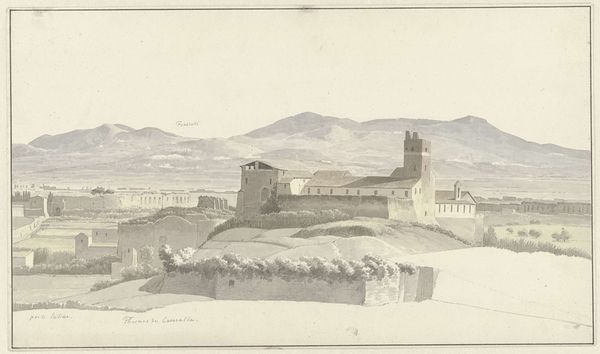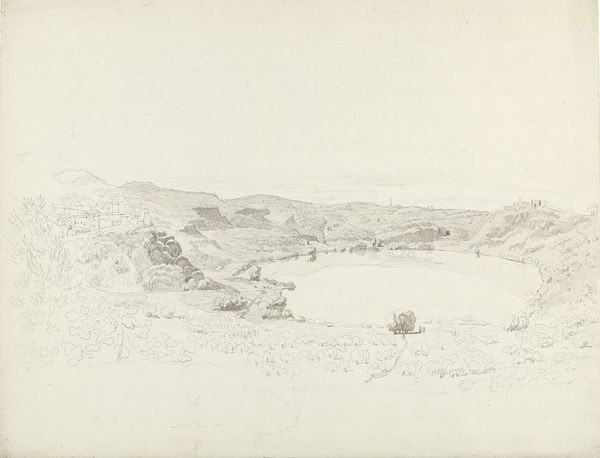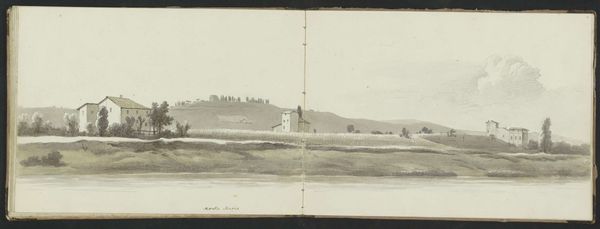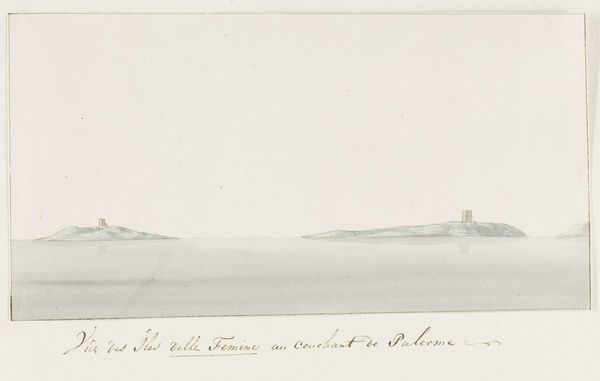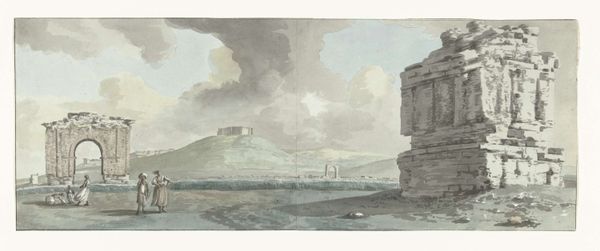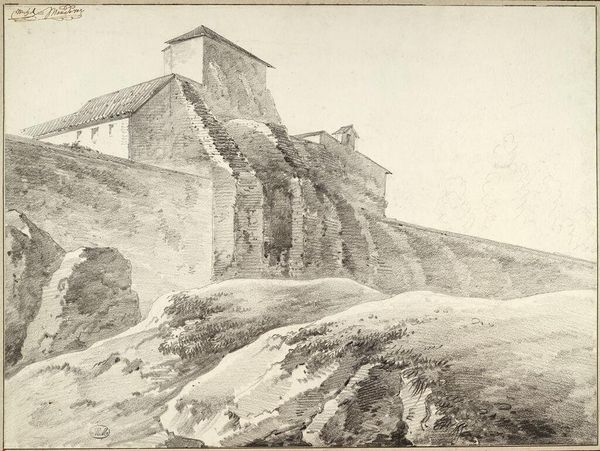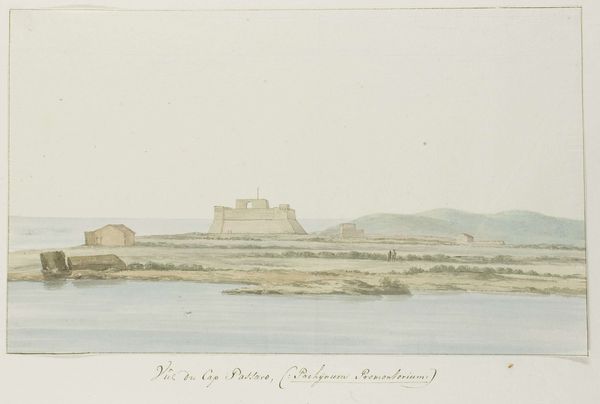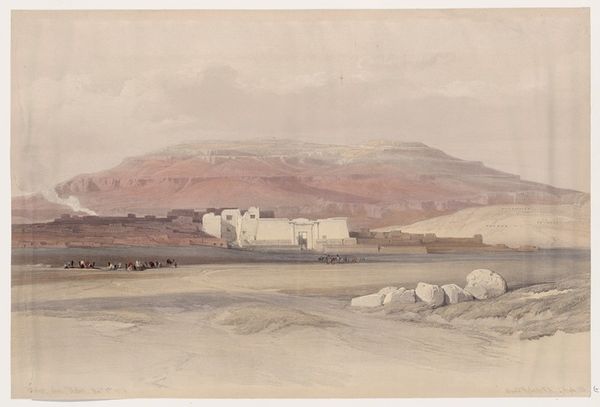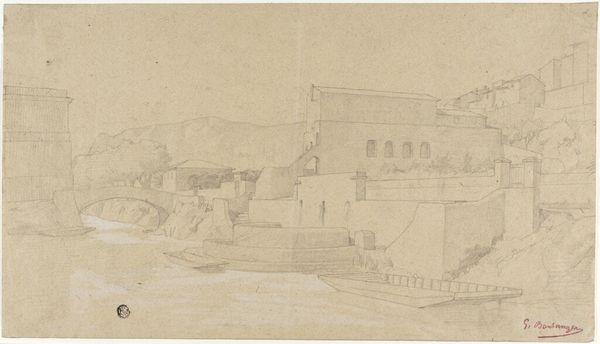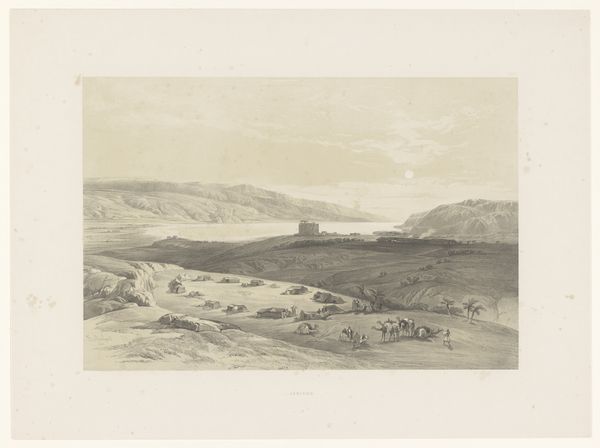
drawing, pencil
drawing
light pencil work
pencil sketch
landscape
romanticism
pencil
line
cityscape
realism
Dimensions height 238 mm, width 371 mm
Josephus Augustus Knip rendered this subtle wash drawing of the Tiber at Fiumicino with a muted palette. The tower, seemingly a ruin amidst the flat landscape, is a key symbol. Towers have always been potent emblems. Throughout history, from the Tower of Babel to medieval keeps, they represent not only shelter, but also ambition, defense, and the human desire to reach the heavens. Consider how these structures appear across epochs—as ziggurats in ancient Mesopotamia, or as bell towers in Renaissance Italy. Each bears the cultural weight of its time. Here, the tower stands as a weathered monument, echoing the transience of human endeavor. The ruin's presence evokes a sense of melancholic reflection, of a civilization fading into the landscape. As we gaze upon it, we subconsciously grapple with themes of decay and the passage of time. The image taps into our deep-seated anxieties about mortality and the ephemeral nature of existence. The tower's presence has continued to resurface and evolve in modern and contemporary art, reminding us of its non-linear journey and its enduring presence in the collective consciousness.
Comments
The plain to the west of Rome, the low-lying land between the city and the Tyrrhenian coastline, was as good as empty in Knip’s day. The artist masterfully portrayed this desolation in this minimalist drawing. Nowadays, it is home to Rome’s Leonardo da Vinci International Airport, also known simply as Fiumicino, after the nearby seaside resort.
Join the conversation
Join millions of artists and users on Artera today and experience the ultimate creative platform.
